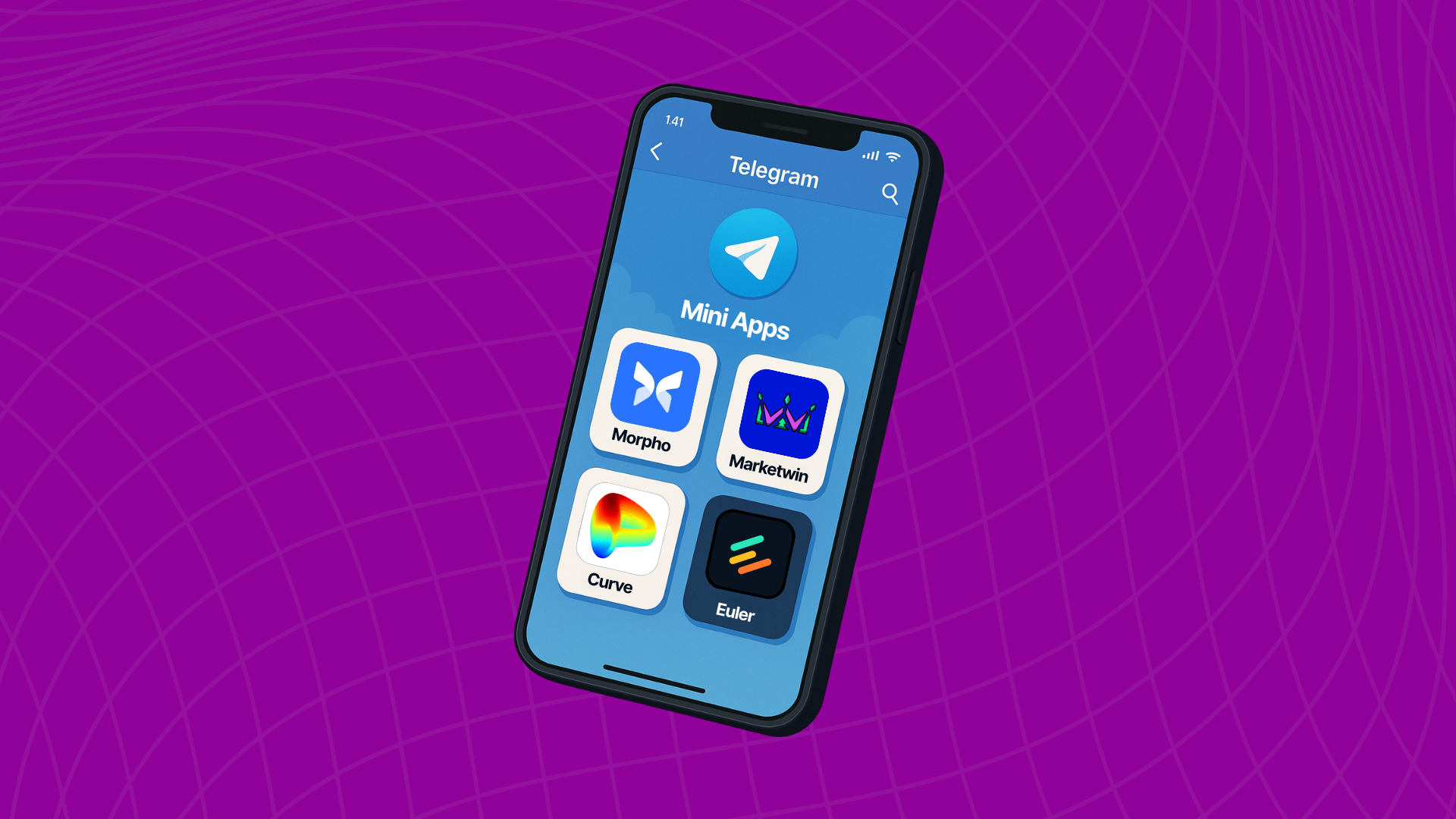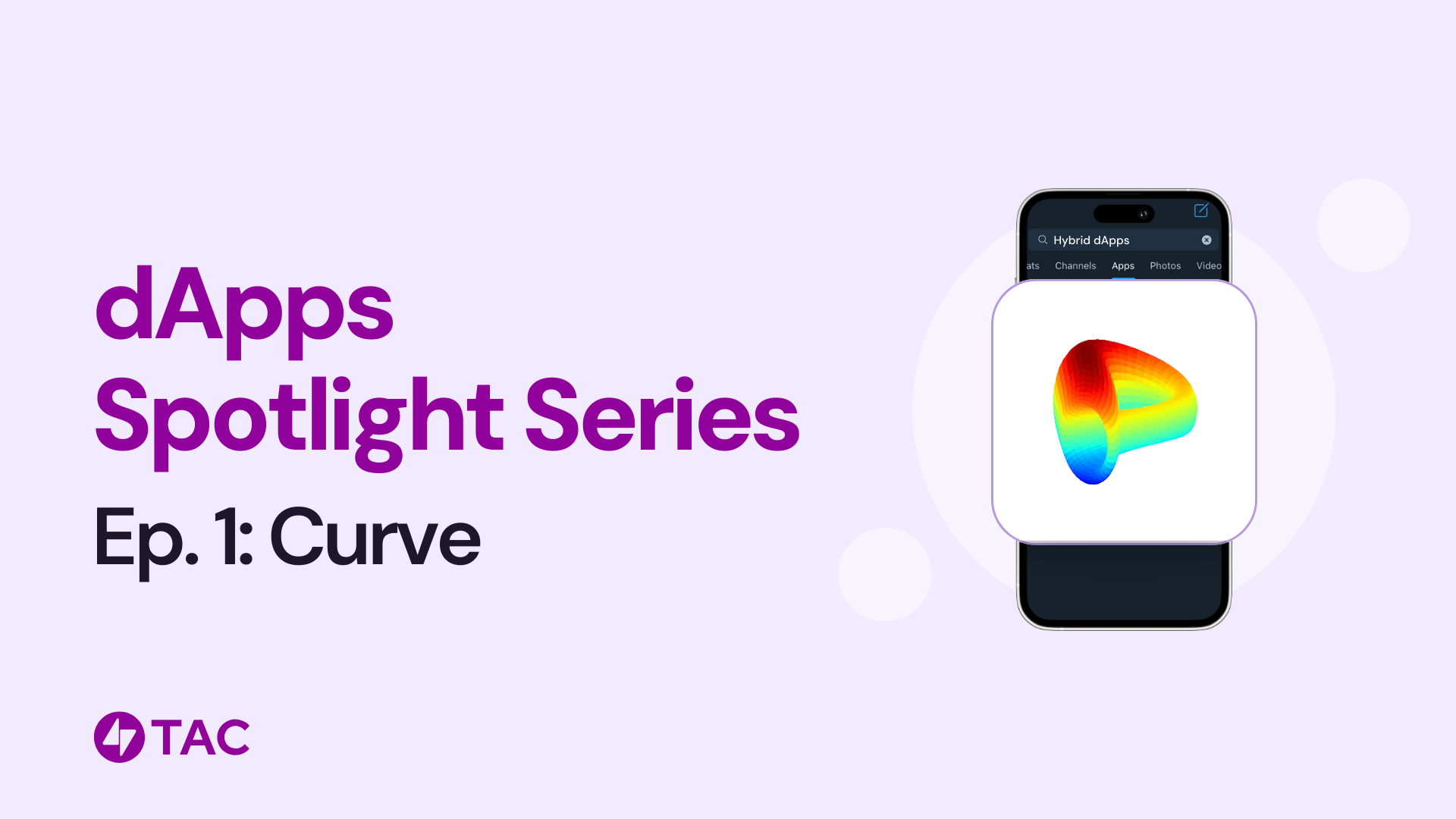DeFi’s next step isn’t another wallet, chain, or yield curve; it’s the moment DeFi becomes an invisible, trusted feature inside the apps people already use every day. "In‑App DeFi" removes onboarding friction, turns distribution into product design, and refocuses builders on UX and utility instead of user acquisition funnels.
TAC is purpose-built for this shift, allowing Ethereum-grade DeFi to run as Hybrid dApps accessible within Telegram MiniApps with zero wallet setup, immediate liquidity, and developer tooling that keeps Solidity and existing EVM workflows intact.
Why the Next Generation of DeFi Will Be Built Inside Telegram
Onboarding is the choke point. The majority of mainstream users struggle to install a dedicated wallet, learn seed‑phrase security, or navigate gas menus. In‑App DeFi collapses that funnel by placing financial actions into familiar flows (chat, games, social polls, fintech widgets), dramatically lowering activation cost.
Distribution complements marketing. Historically, DeFi projects have spent heavily on marketing and incentives to acquire users. Embedding DeFi into apps converts the app’s native growth channels (push, referrals, virality loops) into distribution for financial primitives. This is a stickier growth model.
Contextual utility increases retention. Yield, swapping, and lending become meaningful when paired with an immediately useful in‑app context (e.g., a game economy, payroll remittance, tipping, or savings vaults inside a budgeting MiniApp).
Composability moves from chain to experience. Instead of advertising composability to devs, in‑app DeFi surfaces composed financial interactions to users (e.g., one‑tap swap + deposit + game purchase), turning DeFi primitives into consumer UX components.
For Developers: How Telegram DeFi Works, Powered by TAC
Hybrid dApps architecture. Through TAC, core application logic (smart contracts, AMMs, lending markets) runs on an EVM‑compatible Layer‑1, while the user interface and session live on a consumer platform (Telegram MiniApp). Communication happens through a cross‑chain adapter that translates UX actions into EVM transactions and back.
TON Adapter & lock‑and‑mint model. Instead of bridging that swaps assets through AMMs or exposing UX to wrapped‑token complexity, the cross‑chain adapter provides a lock‑and‑mint pattern. A user action in Telegram triggers the adapter to securely lock or reference assets on TON/Telegram and mint a corresponding representation on the EVM layer used by the DeFi primitive. This preserves asset provenance, limits slippage and MEV surface, and isolates user experience from low‑level token mechanics.
CosmosEVM base and EVM compatibility. By building on a Cosmos‑based EVM implementation (an Ethermint/CosmosEVM approach), TAC gives developers a familiar Solidity environment while benefiting from modular chain design (upgrades, validators, and custom cross‑chain modules). That means you can reuse tooling, audits, and libraries and move faster.
UX abstraction layers. Client SDKs and middleware handle key tasks: walletless session management, user intent signing (via TON wallets), gas abstraction, and UX fallback for advanced users. For most consumer interactions, the user never sees gas or transaction complexity; advanced flows expose these details for power users.
Liquidity and Economics: Telegram DeFi Starts with Depth
Embedding DeFi inside a platform only works if the primitives have liquidity. TAC’s pre‑launch liquidity mobilization demonstrates a replicable pattern: coordinated liquidity bootstraps (vault aggregates, institutional partners, and a dedicated Summoning campaign) deliver market depth at day one, enabling real UX rather than traps of thin markets.
Design lessons for builders:
Align incentives to usage, not speculation. Liquidity providers should be rewarded for time in protocols that power in‑app features (e.g., vaults backing instant swaps inside a MiniApp). This reduces speculative churn and encourages LPs to think long‑term.
Design for immediate utility. If a Telegram MiniApp can route a game purchase to a pooled swap with deep liquidity, conversion succeeds. UX and liquidity must be engineered together.
Use vault‑backed UX flows. Vaults or shared liquidity pools provide deterministic pricing and instant settlement for consumer flows, preserving UX expectations.
Telegram Product Opportunities: Ideas for Builders
The most natural early use cases are those that pair a clear in‑app action with an economic primitive:
Games: Buy items with one‑tap swaps, deposit to a staking vault for seasonal leaderboard rewards, or tokenize in‑game economies backed by protocol liquidity.
Social and creator payments: Instant tips, creator revenue splits, and creator‑driven vaults that let fans participate in yield while supporting creators.
Fintech and remittances: Micro‑savings, instant FX swaps backed by vaults, and lending flows embedded inside payroll or expense apps.
Micro‑investing / fractional ownership: Embedded vaults that let users pool into diversified assets with UX tailored to novices.
Measuring success: new KPIs for in‑app DeFi
Move beyond TVL and APY. Focus on activation rate (users who complete first in‑app transaction), feature/ funnel conversion (e.g., percent who use the vault after seeing the UX), retained liquidity (capital that stays for >30/90/365 days supporting in‑app flows), and economic LTV per user (net fees/rewards per active user over time).
If your roadmap assumes growth through marketing, reimagine the product as distribution: embed, instrument, and iterate. The platform shift to in‑app DeFi will reward teams that solve for user context, safety, and persistent liquidity, exactly the problems TAC is architected to solve.
.png)










.png)
